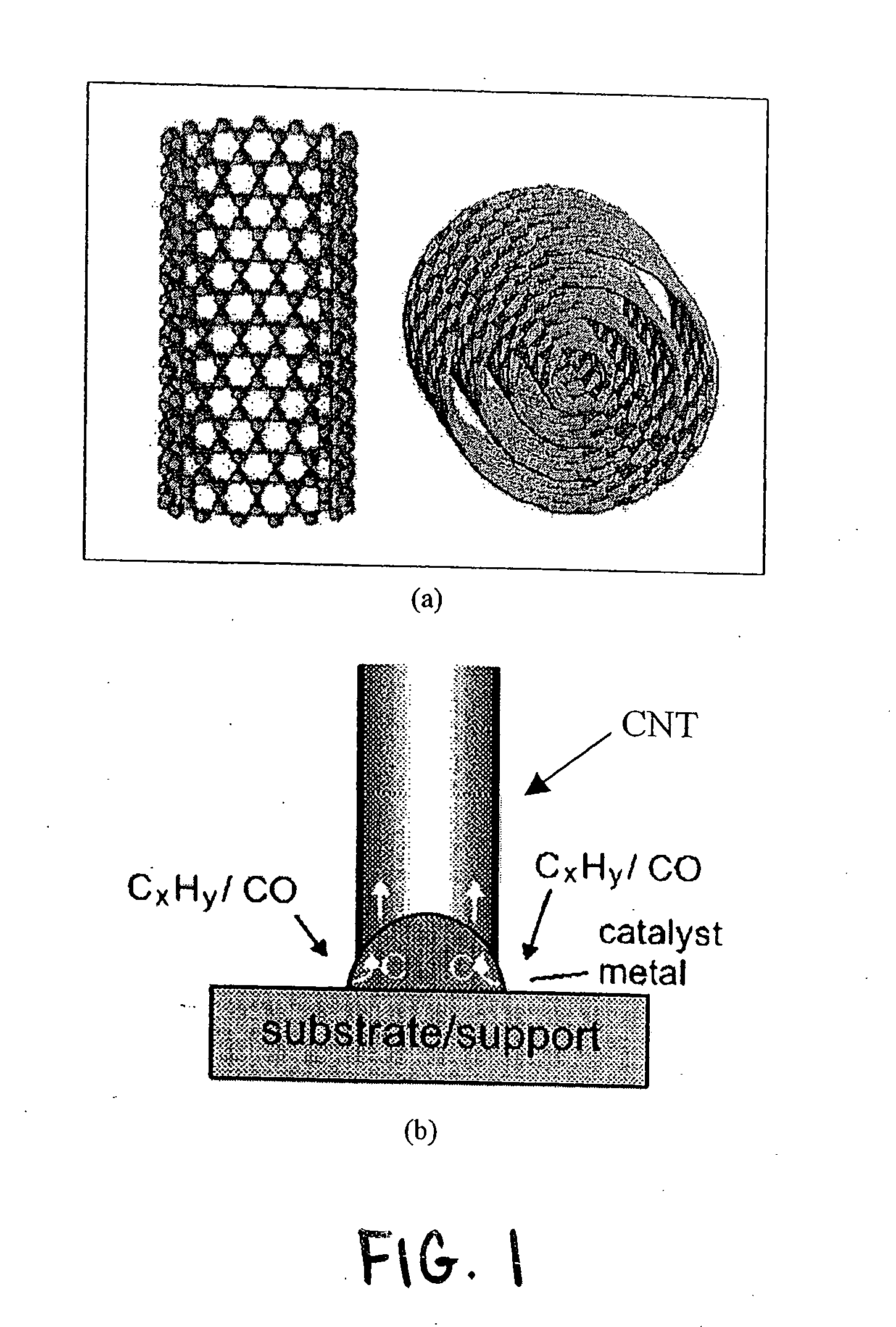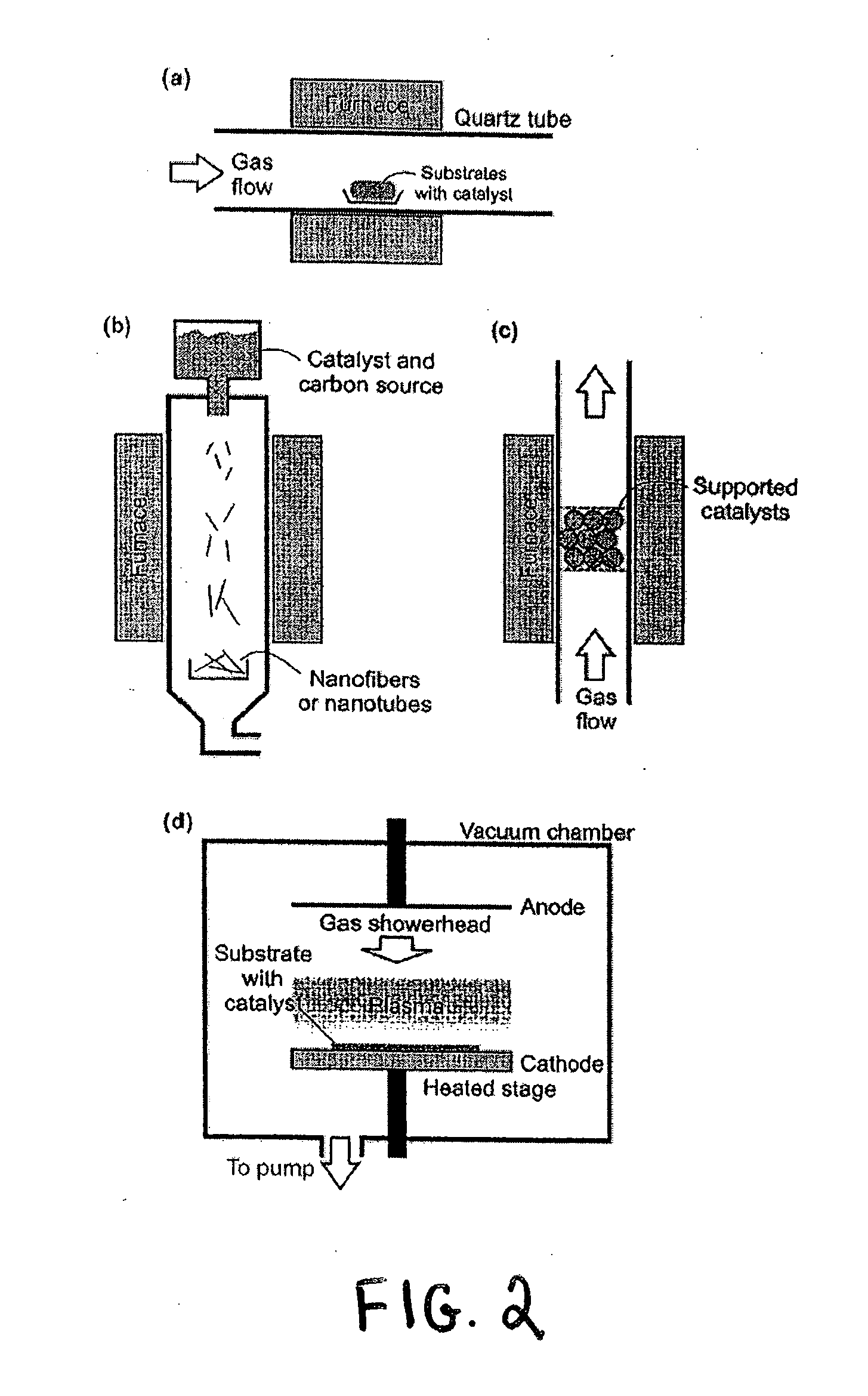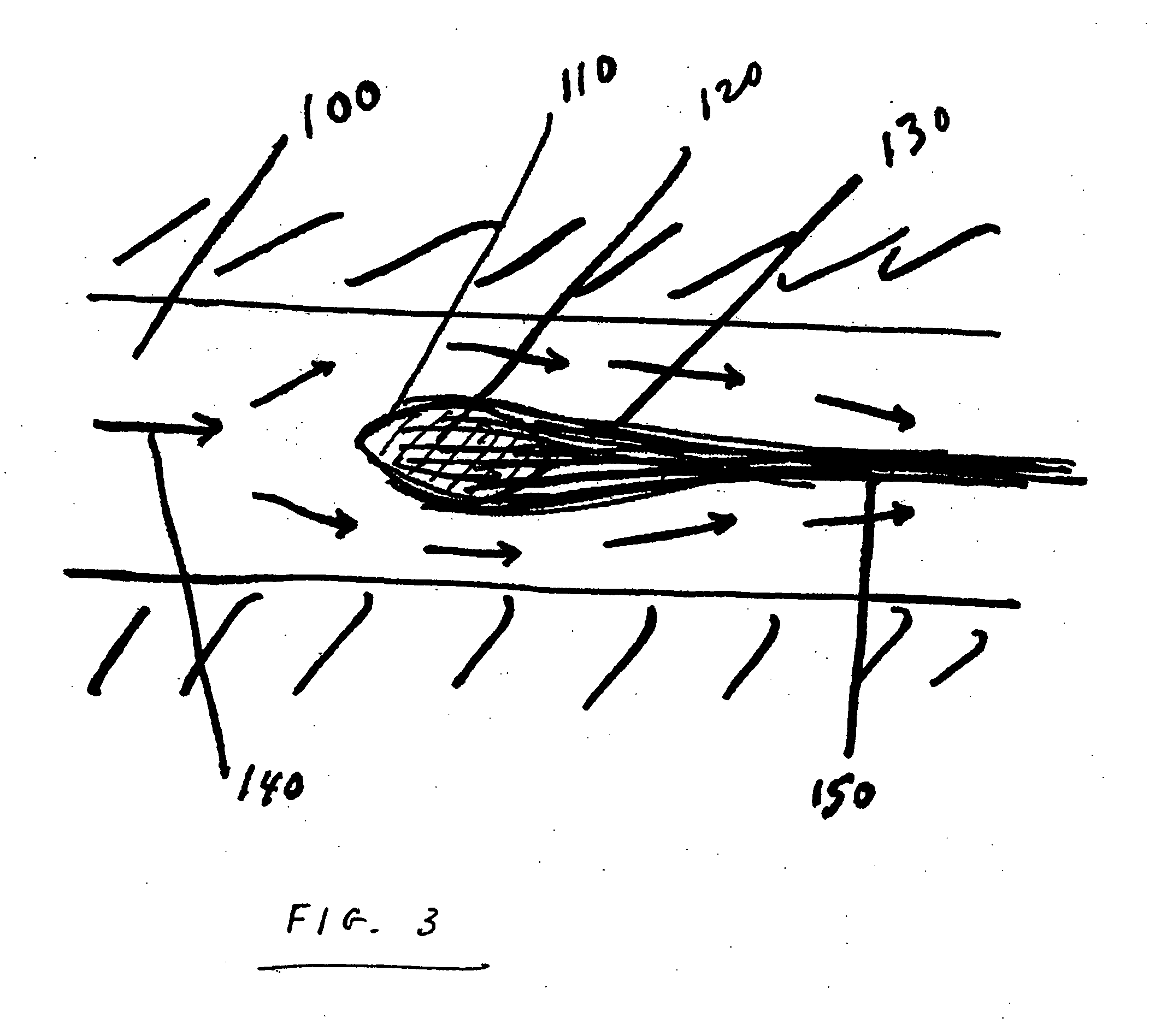Methods and devices for growth and/or assembly of nanostructures
- Summary
- Abstract
- Description
- Claims
- Application Information
AI Technical Summary
Benefits of technology
Problems solved by technology
Method used
Image
Examples
example 1
[0207] In a first example, gas flows in microchannels are used to grow long horizontally-aligned CNT strands. An array of parallel microchannels was fabricated on a (100) silicon wafer substrate by photolithography and KOH etching, following the process described in FIG. 19A. The microchannels had the “two-stage” design described previously and shown in (FIG. 36D). A catalyst film of 1 / 10 nm Fe / Al2O3 was deposited in the channels or on a complimentary substrate (as suggested by the inverted configuration of FIGS. 19B and 19D), by e-beam evaporation, and the catalyst was patterned by lift-off of image-reversal photoresist. The device can be clamped in a fixture and placed in a tube furnace as suggested by FIGS. 39A and 39B, or packaged on a heated substrate as suggested by FIG. 39C. The device was operated in the flow reversal configuration shown in FIG. 42, where the main furnace tube is filled with the reactant mixture of C2H4 / H2 / Ar, and a pressure drop is applied across the microc...
example 2
[0208] In a second example, CNT strands are grown by flowing a reactant mixture through a catalyst-loaded porous diffuser. First, an array of fine holes (e.g. 7-70 mc diameter, 700 μm depth) was etched through a silicon wafer by DRIE, and then a Fe / Al2O3 film is deposited on one side of the wafer. The diffuser (e.g., a selected area of the silicon wafer, which has been cut into dies) was sealed on the end of a tube, and the assembly was placed in a tube furnace as suggested by FIG. 23B. A reactant mixture of C2H4 / H2 / Ar was introduced through the housing tube holding the diffuser, and the gas flowed through the holes in the substrate and reached the catalyst film on the opposite side of the substrate. Aligned CNT strands were formed on the surface of the substrate (FIG. 23C), and continued to grow into long strands. By providing a uniform supply of reactant to the catalyst over a broad area of growth sites, this configuration enables uniform chemical conditions throughout the CNT gro...
PUM
 Login to View More
Login to View More Abstract
Description
Claims
Application Information
 Login to View More
Login to View More - R&D
- Intellectual Property
- Life Sciences
- Materials
- Tech Scout
- Unparalleled Data Quality
- Higher Quality Content
- 60% Fewer Hallucinations
Browse by: Latest US Patents, China's latest patents, Technical Efficacy Thesaurus, Application Domain, Technology Topic, Popular Technical Reports.
© 2025 PatSnap. All rights reserved.Legal|Privacy policy|Modern Slavery Act Transparency Statement|Sitemap|About US| Contact US: help@patsnap.com



